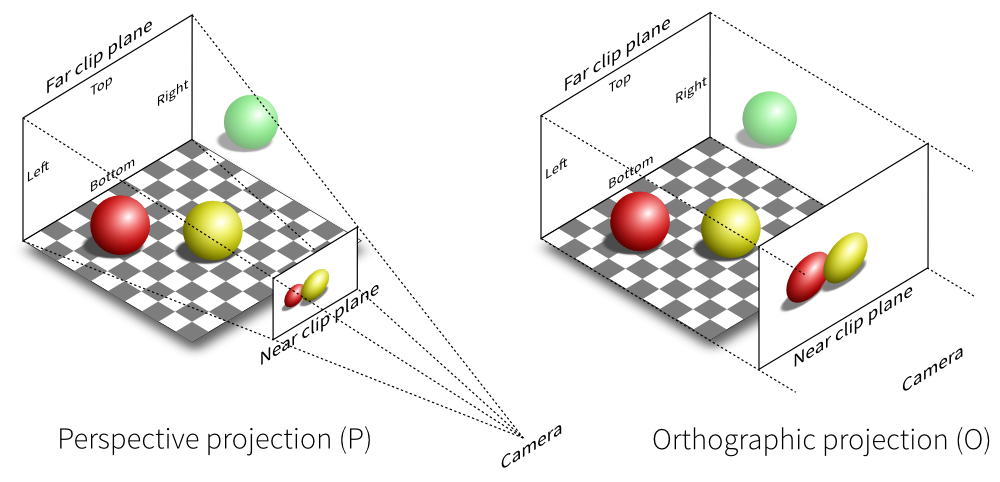矩阵树定理的学习笔记和部分线性代数的知识,记录三道经典题目及变元矩阵树定理。
线性代数 逆序数 对于 $n$ 个不同的元素,先规定各元素之间有一个标准次序(例如 $n$ 个不同的自然数,可规定由小到大为标准次序),于是在这 $n$ 个元素的任一排列中,当某两个元素的先后次序与标准次序不同时,就说有 $1$ 个逆序 。一个排列中所有逆序的总数叫做这个排列的逆序数 。
奇排列与偶排列 逆序数为奇数的排列叫做奇排列 ,逆序数为偶数的排列叫做偶排列 。
对换 在排列中,将任意两个元素对调,其余的元素不动,这种作出新排列的手续叫做对换 。将相邻两个元素对换,叫做相邻对换 )
$n$ 阶行列式 设有 $n ^ 2$ 个数,组成 $n$ 行 $n$ 列的数表
$$\begin{matrix}a_{11} & a_{12} & \cdots & a_{1n} \\
a_{21} & a_{22} & \cdots & a_{2n} \\
\cdots & \cdots & \cdots & \cdots \\
a_{n1} & a_{n2} & \cdots & a_{nn}
\end{matrix}$$
作出表中位于不同行不同列的 $n$ 个数的乘积,并冠以符号 $(-1) ^ \tau$,得到形如
$$(-1) ^ \tau a_{1_{p_1}}a_{2_{p_2}} \cdots a_{n_{p_n}}$$
的项,其中 $p_1, p_2, \cdots, p_n$ 为自然数 $1, 2, \cdots, n$ 的一个排列,$\tau$ 为这个排列的逆序数。由于这样的排列共有 $n!$ 个,因而形如上式的项共有 $n!$ 项。所有这 $n!$ 的代数和
$$\sum (-1) ^ \tau a_{1_{p_1}}a_{2_{p_2}} \cdots a_{n_{p_n}}$$
称为 $n$ 阶行列式,记作
$$D = \begin{vmatrix}a_{11} & a_{12} & \cdots & a_{1n} \\
a_{21} & a_{22} & \cdots & a_{2n} \\
\cdots & \cdots & \cdots & \cdots \\
a_{n1} & a_{n2} & \cdots & a_{nn}
\end{vmatrix}$$
简记作 $\det \begin{pmatrix} a_{ij} \end{pmatrix}$。数 $a_{ij}$ 称为行列式 $\det \begin{pmatrix} a_{ij} \end{pmatrix}$ 的元素。
基本原理公式 公式一 $$\begin{vmatrix}\lambda_1 & & & \\
& \lambda_2 & & \\
& & \ddots & \\
& & & \lambda_n
\end{vmatrix} = \lambda_1 \lambda_2 \cdots \lambda_n$$
$$\begin{vmatrix} a_{11} & 0 &\cdots & 0 \\
a_{21} & a_{22} & \cdots & 0 \\
\vdots & \vdots & \ddots & 0 \\
a_{n1} & a_{n2}& \cdots & a_{nn}
\end{vmatrix} = a_{11}a_{22} \cdots a_{nn} $$
公式二 $$\begin{vmatrix} a_{11} & a_{12} &\cdots & a_{1n} \\
a_{21} & a_{22} & \cdots & 0 \\
\vdots & \vdots & \ddots & 0 \\
a_{n1} & 0& \cdots & 0
\end{vmatrix} = (-1) ^ {\frac {n (n - 1)} {2}}a_{1n}a_{2(n-1)} \cdots a_{n1} $$
行列式的一些性质 行列式 $D ^ T$ 称为行列式 $D$ 的转置行列式。
行列式与它的转置行列式相等。
互换行列式的两行(列),行列式变号。
如果行列式有两行(列)完全相同,则此行列式为零。
行列式的某一行(列)中所有的元素都乘以同一数 $k$,等于用数 $k$ 乘此行列式。
行列式中某一行(列)的所有元素的公因子可以提到行列式符号的外面。
行列式中如果有两行(列)元素成比例,则此行列式等于零。
若行列式的某一行(列)的元素都是两数之和,例如第j列的元素都是两数之和:$$\begin{vmatrix} a_{11} & a_{12} &\cdots & a_{1j} + b_{1j}& \cdots& a_{1n} \\
a_{21} & a_{22} & \cdots &a_{2j} + b_{2j} & \cdots& a_{2n} \\
\vdots & \vdots & & \vdots & \cdots & \vdots \\
a_{n1} & a_{n2} & \cdots & a_{nj} + b_{nj} & \cdots & a_{nn}
\end{vmatrix} = \begin{vmatrix} a_{11} & a_{12} &\cdots & a_{1j}& \cdots& a_{1n} \\
a_{21} & a_{22} & \cdots &a_{2j} & \cdots& a_{2n} \\
\vdots & \vdots & & \vdots & \cdots & \vdots \\
a_{n1} & a_{n2} & \cdots & a_{nj} & \cdots & a_{nn}
\end{vmatrix} + \\ \begin{vmatrix} a_{11} & a_{12} &\cdots & b_{1j}& \cdots& a_{1n} \\
a_{21} & a_{22} & \cdots & b_{2j} & \cdots& a_{2n} \\
\vdots & \vdots & & \vdots & \cdots & \vdots \\
a_{n1} & a_{n2} & \cdots & b_{nj} & \cdots & a_{nn}
\end{vmatrix}$$
把行列式的某一列(行)的各元素乘以同一数然后加到另一列(行)对应的元素上去,行列式不变。
余子式和代数余子式 在 $n$ 阶行列式中,把元素 $a_{ij}$ 所在第 $i$ 行和第 $j$ 列划去后,留下来的 $n - 1$ 阶行列式叫做元素 $a_{ij}$ 的余子式,记作 $M_{ij}$,记
$$A_{i_j} = (-1) ^ {i + j} M_{ij}$$
$A_{ij}$ 叫做元素 $a_{ij}$ 的**代数余子式**。
按行(列)展开行列式 行列式等于它的任一行(列)的各元素与其对应的代数余子式乘积之和,即
$$D = \sum_{j = 1} ^ n a_{ij}A_{ij} \ (i = 1, 2, \cdots, n)$$
即 $i$ 为某一行,按列展开同理。
范德蒙德(Vandermonde)行列式 $$D_n = \begin{vmatrix}1 & 1 & \cdots & 1 \\
x_1 & x_2 & \cdots & x_n \\
x_1 ^ 2 & x_2 ^ 2 & \cdots & x_n ^ 2 \\
\vdots & \vdots & & \vdots \\
x_1 ^ {n - 1} & x_2 ^ {n - 1} & \cdots & x_n ^ {n - 1}
\end{vmatrix} = \prod_{n \geq i \geq j \geq 1}(x_i - x_j)$$
克拉默法则 非齐次线性方程组 $$\begin{cases}
a_{11}x_1 + a_{12}x_2 + \cdots + a_{1n}x_n = b_1 \\
a_{21}x_1 + a_{22}x_2 + \cdots + a_{2n}x_n = b_2 \\
\cdots \\
a_{n1}x_1 + a_{n2}x_2 + \cdots + a_{nn}x_n = b_n
\end{cases}$$
其中右端的常数项 $b_1, b_2, \cdots, b_n$ 不能全为零。
齐次线性方程组 $$\begin{cases}
a_{11}x_1 + a_{12}x_2 + \cdots + a_{1n}x_n = 0 \\
a_{21}x_1 + a_{22}x_2 + \cdots + a_{2n}x_n = 0 \\
\cdots \\
a_{n1}x_1 + a_{n2}x_2 + \cdots + a_{nn}x_n = 0
\end{cases}$$
克拉默法则 设非齐次线性方程组
$$\begin{cases}
a_{11}x_1 + a_{12}x_2 + \cdots + a_{1n}x_n = b_1 \\
a_{21}x_1 + a_{22}x_2 + \cdots + a_{2n}x_n = b_2 \\
\cdots \\
a_{n1}x_1 + a_{n2}x_2 + \cdots + a_{nn}x_n = b_n
\end{cases}$$
其系数行列式为
$$D = \begin{vmatrix}a_{11} & a_{12} & \cdots & a_{1n} \\
a_{21} & a_{22} & \cdots & a_{2n} \\
\vdots & \vdots & & \vdots \\
a_{n1} & a_{n2} & \cdots & a_{nn}
\end{vmatrix} \neq 0$$
则方程组有唯一解
$$x_j = \frac {D_j} {D} \ \ (j = 1, 2, \cdots, n)$$
其中 $D_j$ 是把系数行列式 $D$ 中的第 $j$ 列的元素用方程组右端的常数项代替后所得到的 $n$ 阶行列式。
如果线性方程组的系数行列式 $D \neq 0$,则一定有解,且解是唯一的。
如果线性方程组无解或有两个不同的解,则它的系数行列式必为零。
如果齐次线性方程组的系数行列式 $D \neq 0$,则齐次线性方程组没有非零解。
如果齐次线性方程组有非零解,则它的系数行列式必为零。
子式与主子式 在矩阵中任取 $k$ 行、$k$ 列,这 $k * k$ 个元素按原来的次序构成的行列式,称为该矩阵的一个 $k$ 阶子式。
Binet-Cauchy 公式 设 $A$ 和 $B$ 各为 $p \times q$ 及 $q \times p$ 矩阵,则有
$$\det AB = \begin{cases}0 & p > q \\
\det A \det B & p = q \\
\sum_{1 \leq j_1 < \cdots < j_p \leq q} A \begin{pmatrix}1 & 2 & \cdots & p\\ j_1 & j_2 & \cdots & j_p\end{pmatrix} B \begin{pmatrix}j_1 & j_2 & \cdots & j_p \\ 1 & 2 & \cdots & p\end{pmatrix} & p < q
\end{cases}$$
特别的,$\det A A ^ T = (\det A) ^ 2$
矩阵树定理 一些定义
对于图 $G$ 的度数矩阵 $D[G]$ 是一个 $n * n$ 的矩阵,且满足当 $i \neq j$ 时,$d_{ij} = 0$,当 $i = j$ 时,$d_{ij}$ 等于 $v_i$ 的度数。
邻接矩阵 $A[G]$ 也是一个 $n * n$ 的矩阵,且满足 $v_i, v_j$ 之间有边相连,$a_{ij} = 1$,否则为 $0$。
基尔霍夫矩阵(拉普拉斯算子) 定义 $G$ 的基尔霍夫矩阵 $C[G] = D[G] - A[G]$。
矩阵树定理 $G$ 的所有不同的生成树的个数等于其基尔霍夫矩阵 $C[G]$ 任意一个 $n - 1$ 阶主子式的行列式的绝对值。
$n - 1$ 阶主子式,就是对于 $r (1 \leq r \leq n)$,将 $C[G]$ 的第 $r$ 行,第 $r$ 列同时去掉后的到的新矩阵,用 $C_r[G]$ 表示。
如图
$$D[G] = \begin{pmatrix}2 & 0 & 0 & 0 & 0 \\
0 & 3 & 0 & 0 & 0 \\
0 & 0 & 3 & 0 & 0 \\
0 & 0 & 0 & 2 & 0\\
0 & 0 & 0 & 0 & 2 \end{pmatrix}$$
$$A[G] = \begin{pmatrix}0 & 1 & 1 & 0 & 0 \\
1 & 0 & 1 & 1 & 0 \\
1 & 1 & 0 & 0 & 1 \\
0 & 1 & 0 & 0 & 1\\
0 & 0 & 1 & 1 & 0 \end{pmatrix}$$
$$C[G] = \begin{pmatrix}2 & -1 & -1 & 0 & 0 \\
-1 & 3 & -1 & -1 & 0 \\
-1 & -1 & 3 & 0 & -1 \\
0 & -1 & 0 & 2 & -1\\
0 & 0 & -1 & -1 & 2 \end{pmatrix}$$
任意取一个 $r$,如 $r = 2$ 得
$$C_2[G] = \begin{pmatrix}2 & -1 & 0 & 0 \\
-1 & 3 & 0 & -1 \\
0 & 0 & 2 & -1\\
0 & -1 & -1 & 2 \end{pmatrix}$$
计算其行列式值为 $11$,故该图生成树个数为 $11$。
「SPOJ 104」Highways 一个有 $n$ 座城市的组成国家,城市 $1$ 至 $n$ 编号,其中一些城市之间可以修建高速公路。现在,需要有选择的建一些高速公路,从而组成一个交通网络。你的任务是计算有多少种方案,使得任意两座城市之间恰好只有一条路?
链接 SPOJ 104
题解 题意其实就是有 $n$ 个点 $m$ 条边,求生成树个数。
我们直接用矩阵树定理,建出基尔霍夫矩阵,然后求其 $n - 1$ 阶主子式的行列式的值的绝对值就好了。
关于行列式值的求法,我们可以利用 Gauss-Jordan 消元法将其转成上三角矩阵,然后主对角线元素的乘积就是其行列式的值。
注意开 long long
代码 这里求的是 $C_n[G]$,即去掉的是第 $n$ 行和第 $n$ 列。
1 2 3 4 5 6 7 8 9 10 11 12 13 14 15 16 17 18 19 20 21 22 23 24 25 26 27 28 29 30 31 32 33 34 35 36 37 38 39 40 41 42 43 44 45 46 47 48 49 50 51 52 53 54 55 56 57 58 59 60 61 62 63 64 65 66 67 68 69 70 71 72 73 74 75 76 77 78 79 80 81 82 83 84 85 86 87 88 89 90 91 92 93 94 95 96 97 98 99 100 101 102 103 104 105 106 107 108 109 110 111 112 113 114 115 116 117 118 119 120 121 122 123 124 125 126 127 128 129 130 131 132 133 134 135 136 137 138 139 140 141 142 143 144 145 146 147 148 149 150 151 #include <bits/stdc++.h> namespace IO {inline char read () static const int IN_LEN = 1000000 ; static char buf[IN_LEN], *s, *t; s == t ? t = (s = buf) + fread(buf, 1 , IN_LEN, stdin ) : 0 ; return s == t ? -1 : *s++; } template <typename T>inline void read (T &x) static char c; static bool iosig; for (c = read(), iosig = false ; !isdigit (c); c = read()) { if (c == -1 ) return ; c == '-' ? iosig = true : 0 ; } for (x = 0 ; isdigit (c); c = read()) x = x * 10 + (c ^ '0' ); iosig ? x = -x : 0 ; } inline void read (char &c) while (c = read(), isspace (c) && c != -1 ) ; } inline int read (char *buf) register int s = 0 ; register char c; while (c = read(), isspace (c) && c != -1 ) ; if (c == -1 ) { *buf = 0 ; return -1 ; } do buf[s++] = c; while (c = read(), !isspace (c) && c != -1 ); buf[s] = 0 ; return s; } const int OUT_LEN = 1000000 ;char obuf[OUT_LEN], *oh = obuf;inline void print (char c) oh == obuf + OUT_LEN ? (fwrite(obuf, 1 , OUT_LEN, stdout ), oh = obuf) : 0 ; *oh++ = c; } template <typename T>inline void print (T x) static int buf[30 ], cnt; if (x == 0 ) { print('0' ); } else { x < 0 ? (print('-' ), x = -x) : 0 ; for (cnt = 0 ; x; x /= 10 ) buf[++cnt] = x % 10 | 48 ; while (cnt) print((char )buf[cnt--]); } } inline void flush () 1 , oh - obuf, stdout ); }struct InputOutputStream { template <typename T> inline InputOutputStream &operator >>(T &x) { read(x); return *this ; } template <typename T> inline InputOutputStream &operator <<(const T &x) { print(x); return *this ; } ~InputOutputStream() { flush(); } } io; } namespace {using IO::io;const int MAXN = 20 ;const double EPS = 1e-9 ;struct Task {#define long long long double a[MAXN + 1 ][MAXN + 1 ]; template <typename T, size_t size> inline bool gaussJordan (T a[size][size], const int n) for (register int i = 0 , idx; idx = i, i < n; ++i) { for (register int j = i + 1 ; j < n; j++) if (fabs (a[j][i]) > fabs (a[idx][i])) idx = j; if (fabs (a[idx][i]) < EPS) return false ; if (idx != i) for (register int j = i; j <= n; j++) std ::swap(a[i][j], a[idx][j]); for (register int j = 0 ; j < n; j++) if (i != j) for (register int k = n; k >= i; k--) a[j][k] -= a[i][k] / a[i][i] * a[j][i]; } return true ; } template <typename T, size_t size> inline long getDetVal (T a[size][size], const int n) gaussJordan(a, n); register double ans = 1 ; for (register int i = 0 ; i < n - 1 ; i++) ans *= a[i][i]; return round(fabs (ans)); } inline void solve () register int T, n, m; for (io >> T; T--;) { memset (a, 0 , sizeof (a)); static int deg[MAXN + 1 ]; memset (deg, 0 , sizeof (deg)); io >> n >> m; for (register int i = 0 , u, v; i < m; i++) { io >> u >> v, u--, v--; deg[u]++, deg[v]++, a[u][v] = a[v][u] = -1 ; } for (register int i = 0 ; i < n; i++) a[i][i] += deg[i]; io << getDetVal(a, n) << '\n' ; } } #undef long } task; } int main () task.solve(); return 0 ; }
「UVA 10766」Organising the Organisation 链接 UVA 10766
题解 如果 $a, b$ 没有矛盾,就在他们之间连一条边,最后要求得到的关系就是原图的一棵生成树,虽然此题规定了生成树的根,但无向图生成树个数与根无关,所以我们直接用矩阵树定理计算原图的生成树个数即可。
注意要用 long double
代码 1 2 3 4 5 6 7 8 9 10 11 12 13 14 15 16 17 18 19 20 21 22 23 24 25 26 27 28 29 30 31 32 33 34 35 36 37 38 39 40 41 42 43 44 45 46 47 48 49 50 51 52 53 54 55 56 57 58 59 60 61 62 63 64 65 66 67 68 69 70 71 72 73 74 75 76 77 78 79 80 81 82 83 84 85 86 87 88 89 90 91 92 93 94 95 96 97 98 99 100 101 102 103 104 105 106 107 108 109 110 111 112 113 114 115 116 117 118 119 120 121 122 123 124 125 126 127 128 129 130 131 132 133 134 135 136 137 138 139 140 141 142 143 144 145 146 147 148 149 150 #include <bits/stdc++.h> namespace IO {inline char read () static const int IN_LEN = 1000000 ; static char buf[IN_LEN], *s, *t; s == t ? t = (s = buf) + fread(buf, 1 , IN_LEN, stdin ) : 0 ; return s == t ? -1 : *s++; } template <typename T>inline bool read (T &x) static char c; static bool iosig; for (c = read(), iosig = false ; !isdigit (c); c = read()) { if (c == -1 ) return false ; c == '-' ? iosig = true : 0 ; } for (x = 0 ; isdigit (c); c = read()) x = x * 10 + (c ^ '0' ); iosig ? x = -x : 0 ; return true ; } inline void read (char &c) while (c = read(), isspace (c) && c != -1 ) ; } inline int read (char *buf) register int s = 0 ; register char c; while (c = read(), isspace (c) && c != -1 ) ; if (c == -1 ) { *buf = 0 ; return -1 ; } do buf[s++] = c; while (c = read(), !isspace (c) && c != -1 ); buf[s] = 0 ; return s; } const int OUT_LEN = 1000000 ;char obuf[OUT_LEN], *oh = obuf;inline void print (char c) oh == obuf + OUT_LEN ? (fwrite(obuf, 1 , OUT_LEN, stdout ), oh = obuf) : 0 ; *oh++ = c; } template <typename T>inline void print (T x) static int buf[30 ], cnt; if (x == 0 ) { print('0' ); } else { x < 0 ? (print('-' ), x = -x) : 0 ; for (cnt = 0 ; x; x /= 10 ) buf[++cnt] = x % 10 | 48 ; while (cnt) print((char )buf[cnt--]); } } inline void flush () 1 , oh - obuf, stdout ); }struct InputOutputStream { template <typename T> inline InputOutputStream &operator >>(T &x) { read(x); return *this ; } template <typename T> inline InputOutputStream &operator <<(const T &x) { print(x); return *this ; } ~InputOutputStream() { flush(); } } io; } namespace {using IO::io;const int MAXN = 60 ;typedef long double ld;const ld EPS = 1e-9 ;struct Task {#define long long long ld a[MAXN + 1 ][MAXN + 1 ]; bool vis[MAXN + 1 ][MAXN + 1 ]; template <typename T, size_t size> inline bool gaussJordan (T a[size][size], const int n) for (register int i = 0 , idx; idx = i, i < n; i++) { for (register int j = i + 1 ; j < n; j++) if (fabs (a[j][i]) > fabs (a[idx][i])) idx = j; if (fabs (a[idx][i]) < EPS) return false ; if (i != idx) for (register int j = i; j <= n; j++) std ::swap(a[i][j], a[idx][j]); for (register int j = 0 ; j < n; j++) if (i != j) for (register int k = n; k >= i; k--) a[j][k] -= a[i][k] / a[i][i] * a[j][i]; } } template <typename T, size_t size> inline long getDetVal (T a[size][size], const int n) gaussJordan(a, n); register ld ans = 1 ; for (register int i = 0 ; i < n - 1 ; i++) ans *= a[i][i]; return round(fabs (ans)); } inline void solve () register int n, m, k; while (IO::read(n) && IO::read(m) && IO::read(k)) { memset (vis, 0 , sizeof (vis)); memset (a, 0 , sizeof (a)); for (register int i = 0 , u, v; i < m; i++) io >> u >> v, u--, v--, vis[u][v] = vis[v][u] = true ; for (register int i = 0 ; i < n; i++) for (register int j = i + 1 ; j < n; j++) if (!vis[i][j]) a[i][i]++, a[j][j]++, a[i][j]--, a[j][i]--; io << getDetVal(a, n) << '\n' ; } } #undef long } task; } int main () task.solve(); return 0 ; }
「SDOI 2014」重建 链接 BZOJ 3534
题解 变元矩阵树定理 邻接矩阵中是可以带权的,$w_{ij}$ 表示 $i, j$ 的边权,$e_i$ 表示边。
那么 $n - 1$ 阶主子式的值为
$$\sum_{T \text{ form a tree}}(\prod_{i \in T}w_{e_i})$$
即求出的是所有生成树边权积之和。
有了变元矩阵树定理,我们再来考虑这道题。
令 $P(i, j)$ 表示题目中所给出的概率矩阵,$G(i, j)$ 为我们所要构造的基尔霍夫矩阵。
先考虑一棵生成树的概率,$T$ 表示这棵生成树,其概率应为
$$\prod_{e \in T}P_e \prod_{e \notin T}(1 - P_e)$$
即在生成树上的边连通的概率乘上不在生成树上的边不连通的概率。
我们令 $G(i, j) = \frac {P(i, j)} {1 - P(i, j)}$,然后套用变元矩阵树定理,令
$$G(i, i) = -\sum_{j \neq i}G(i, j)$$
求出 $G$ 的 $n - 1$ 阶主子式,即为
$$\sum_{T \text{ form a tree}}\prod_{e \in T}\frac {P_e} {1 - P_e}$$
令
$$f = \prod_{e} (1 - P_e)$$
那么将其乘上 $f$,可得
$$\begin{aligned} & \prod_{e}(1 - P_e) \sum_{T \text{ form a tree}}\prod_{e \in T}\frac {P_e} {1 - P_e}\\ = & \sum_{T \text{ form a tree}} \prod_{e}(1 - P_e)\prod_{e \in T}\frac {P_e} {1 - P_e} \\
= & \sum_{T \text{ form a tree}}\prod_{e \in T}P_e \prod_{e \notin T}(1 - P_e) \end{aligned}$$
于是我们就得出了答案,实现的时候要注意 $P = 1$ 的问题,我们把它当成 $1 - \epsilon$ 就好了。
代码 1 2 3 4 5 6 7 8 9 10 11 12 13 14 15 16 17 18 19 20 21 22 23 24 25 26 27 28 29 30 31 32 33 34 35 36 37 38 39 40 41 42 43 44 45 46 47 48 49 50 51 52 53 54 55 56 57 58 59 60 61 62 63 64 65 66 67 68 69 70 71 #include <bits/stdc++.h> namespace {const int MAXN = 60 ;const double EPS = 1e-10 ;struct Task {#define long long long double a[MAXN + 1 ][MAXN + 1 ]; template <typename T, size_t size> inline bool gaussJordan (T a[size][size], const int n) for (register int i = 0 , idx; idx = i, i < n; i++) { for (register int j = i + 1 ; j < n; j++) if (fabs (a[j][i]) > fabs (a[idx][i])) idx = j; if (fabs (a[idx][i]) < EPS) return false ; if (i != idx) for (register int j = i; j <= n; j++) std ::swap(a[i][j], a[idx][j]); for (register int j = 0 ; j < n; j++) if (i != j) for (register int k = n; k >= i; k--) a[j][k] -= a[i][k] / a[i][i] * a[j][i]; } } template <typename T, size_t size> inline double getDetVal (T a[size][size], const int n) gaussJordan(a, n); register double ans = 1 ; for (register int i = 0 ; i < n - 1 ; i++) ans *= a[i][i]; return fabs (ans); } inline void solve () register int n; std ::cin >> n; register double f = 1 ; for (register int i = 0 ; i < n; i++) { for (register int j = 0 ; j < n; j++) { std ::cin >> a[i][j]; if (i != j) { if (a[i][j] > 1 - EPS) a[i][j] -= EPS; if (i < j) f *= 1 - a[i][j]; a[i][j] = a[i][j] / (1 - a[i][j]); } } } for (register int i = 0 ; i < n; i++) for (register int j = 0 ; j < n; j++) if (i != j) a[i][i] -= a[i][j]; std ::cout << std ::fixed << std ::setprecision(13 ) << getDetVal(a, n) * f; } #undef long } task; } int main () std ::ios::sync_with_stdio(false ), std ::cin .tie(NULL ), std ::cout .tie(NULL ); task.solve(); return 0 ; }




